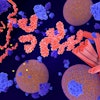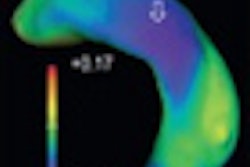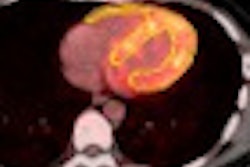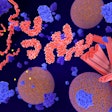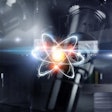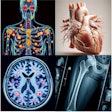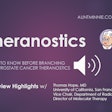Hybrid anatomical/functional imaging, the role of FDG, and the development of new molecular imaging agents will be among the overriding themes in nuclear medicine and molecular imaging at this year's RSNA meeting in Chicago.
For example, Swiss researchers will demonstrate their progress on a clinical prototype of a PET/MRI system. The emerging technology will be highlighted in a presentation on Sunday, November 28, by Osman Ratib, MD, PhD, head of the radiology department at the University Hospital of Geneva (10:55 a.m.-11:05 a.m., SSA18-02, Room S505AB).
Also at the forefront of molecular imaging abstracts will be details on the progress of new radiotracers, such as F-18 choline, according to Homer Macapinlac, MD, chairman of the department of nuclear medicine at MD Anderson Cancer Center at the University of Texas in Houston and chairman of RSNA's nuclear medicine subcommittee.
Specifically, Italian researchers will provide details on the accuracy of F-18 choline PET/CT to detect the local recurrence of prostate cancer (Sunday, November 28, 12:05 p.m.-12:15 p.m., SSA18-09, Room S505AB).
Given the experience of the molybdenum-99 shortage over the past two years, Macapinlac said that the nuclear medicine community is "optimistically cautious that we [will] not get any further [molybdenum-99] shortages this year. We hope that in the near future new tracers will become approved. Among the PET tracers which provide the most excitement would be in neurology for amyloid imaging."
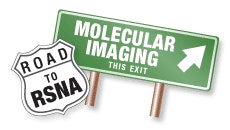
"I think that those [agents] are important, especially with the new method of filing for approval for clinical trials through the emergency investigational new drug [EIND] process" adopted by the U. S. Food and Drug Administration, Li said.
In Chicago, there also will be clinical research on positron emission mammography (PEM) and how it may influence surgical planning in early-stage breast cancer (Monday, November 29, 11:40 a.m.-11:50 a.m., VM21-15, Arie Crown Theater).
In the area of refresher courses, an interactive session titled "Improving Your PET Practice: Lessons Learned in Clinical Practice, with Emphasis on Case Studies, Image Correlation, and PET/CT" is on the schedule for Monday. The forum will discuss some common pitfalls of PET/CT image interpretation in a busy radiology practice and how to avoid interpretive errors and oversights (Monday, November 29, 8:30 a.m.-10:00 a.m., RC211, Room E450B).
Given PET's prominent place in brain imaging, a refresher course titled "PET Brain Imaging: Current and Emerging Applications -- Emphasis on Dementia" will offer insights into cognitive disorders. This session will detail the role of FDG-PET imaging in differential diagnosis of dementia and the benefits of MRI in clinical dementia workup (Tuesday, November 30, 8:30 a.m.-10:00 a.m., RC311, Room S505AB).
Li will host a refresher course on the "Essentials of Molecular Imaging and Systems Diagnostics for Clinical Radiologists." The presentation will focus on the definition of systems diagnostics, list the requirements for system diagnostics, and discuss the role of radiologists in this area (Tuesday, November 30, 4:30 p.m.-6:00 p.m., RC417B, Room E353A).
"Our main push is to teach radiologists to integrate molecular imaging for a lot more information," Li said. "We can actually use existing imaging modalities to get genetic and molecular information and not wait for the development of PET agents and detection systems."
Meanwhile, "Advances in Cardiac Nuclear Imaging: SPECT/CT and PET/CT" is part of Wednesday's refresher course schedule. Presenters will help attendees understand the technical advancements associated with new scintillation cameras and SPECT/CT and PET/CT cameras. The discussion will include the benefits of CT attenuation correction, as well as the adjunctive benefits of anatomic definition provided with CT and physiologic and functional information provided by SPECT and PET (Wednesday, December 1, 8:30 a.m.-10:00 a.m., RC511, Room N230).
Below are highlights of the many novel molecular imaging scientific papers scheduled for presentation at RSNA 2010. To view the complete RSNA scientific program and abstracts directly, visit the conference's website by clicking here.
